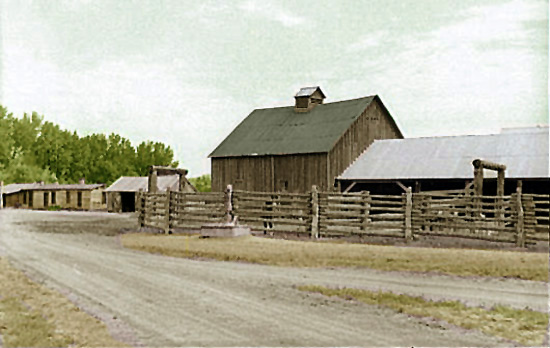
Qaurter Circle U Horse Barn, 1939.
At the left in the photo is the bunkhouse and mess hall. In the center next to the corral
fence is a watering trough with hand pump. A second barn and stables were located behind and to the
right of the barns and stables depicted. As suggested by the corrals and barn,
horses remained important on ranches in the 1930's. The day-to-day activities ranches such as the Quarter Circle U
often revolved around the care and training of the horses and preparation for spring and fall roundup.
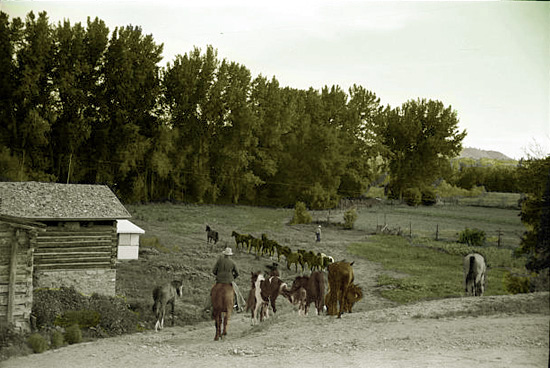
Watering the Cavy, Quarter Circle U Ranch, 1939.
Ranches, such as the Quarter Circle U were required to be self-sufficient in repairs to equipment, shoeing the horses, etc.
Thus, the Quarter Circle U maintained its own blacksmith shop and a shop for repairs to leather
tack.
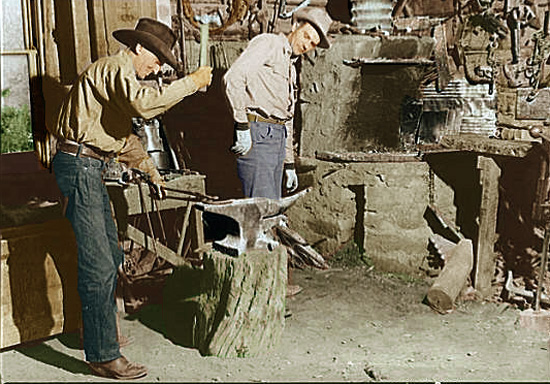
Quarter Circle U Horse Blacksmith Shop, 1939.
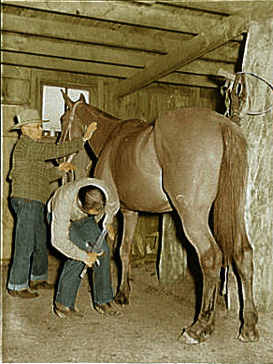 . .
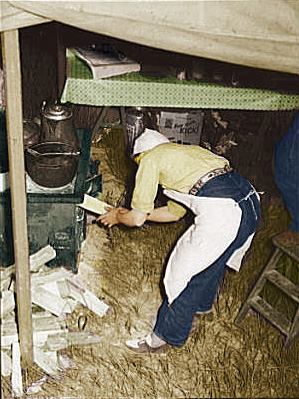
Left: Shoeing a horse.
Right: Cook on Roundup
In the image of the horseshoeing, note the hand gently placed on the horse's neck. This has a calming effect
on the horse and, as observed below, is an important part of horse "whispering."
The training of horses to be saddle ready was initially done in the "breaking pen." The pen was a
circular shaped corral. The method breaking a horse was not done as is sometime depicted by saddling a bronc, and riding it
to exhaustion. Such a method was not only cruel, but extemely dangerous to both the horse and
rider. Instead, horses rely on visual and tactual clues. By using the same methods through which horses
communicate, the horse will learn to trust the rider. Rothstein on his stay at the Quarter Circle U documented
though a series of four photos the method used.
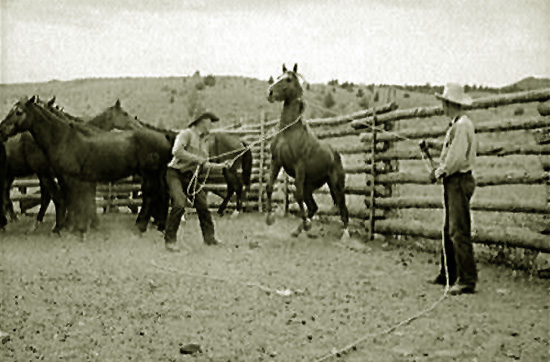
Roping Horse for training, Photo by Arthur Rothstein, 1939.
The first part of the training is to acclimate the horse to the halter. This is done through the
use of the center of the "snubbing post" located in the center of the past. A rope 16 to 20 feet long is run from the halter and wrapped
around the post. As the horse gets used to the halter, but realizes that he cannot get away, the horse is
acclimated to the halter by either tightening the rope or loosening it. The loosing is a reward for good behaviour.
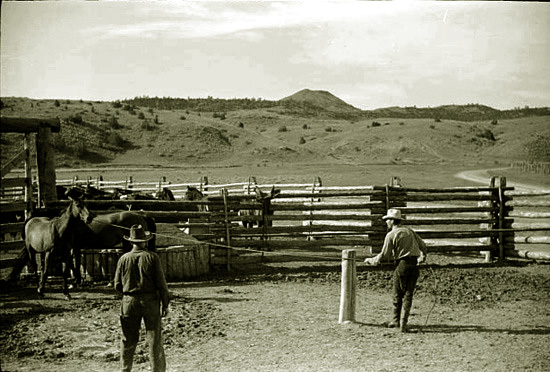
The Snubbing Post, Quarter Circle U, Photo by Arthur Rothstein, 1939.
After the horse is acclimated to the halter, it may be led around the pen. At first it is important for the
trainer to lead the horse keeping his face toward the horse. Later, the trainer can guide the horse.
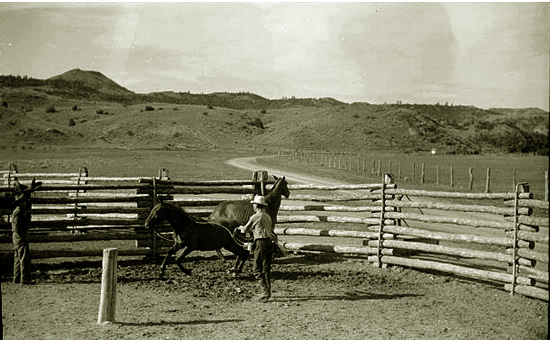
Horse being guided around the pen. Photo by Arthur Rothstein, 1939.
After the horse has learned to be guided, the horse is acclimated to the saddle.
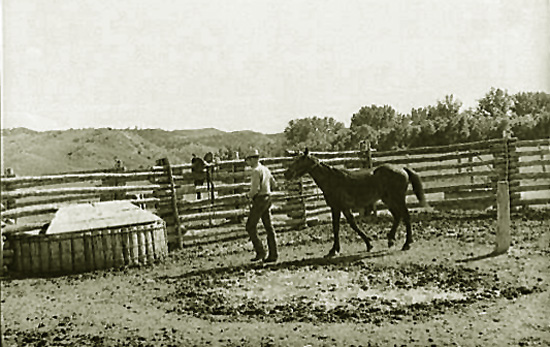
Leading the horse to the saddle, Photo by Arthur Rothstein, 1939.
After the horse has been saddled, the saddle should be left in place without any attempt to mount the saddle until the
horse has become used to its feel. Mares frequently nuzzle the necks of their foals. It has been observed that lightly
stroking the horse as depicted above with regard to horse shoeing, will have a calming influence. Only after the horse has been acclimated to the saddle, should one
attempt to mount the horse, at the same time stroking the side of the horses neck and reasuring the horse that everything is
fine. In this manner, a horse can be trained. Note the shadows in photo number 2 above and
in photo number 4 immediately above. The process in just getting the horse ready for the saddle has
taken the better part of a day.
Music this page: I Ride an Old Paint
Next page: Quarter Circle U Roundup.
|